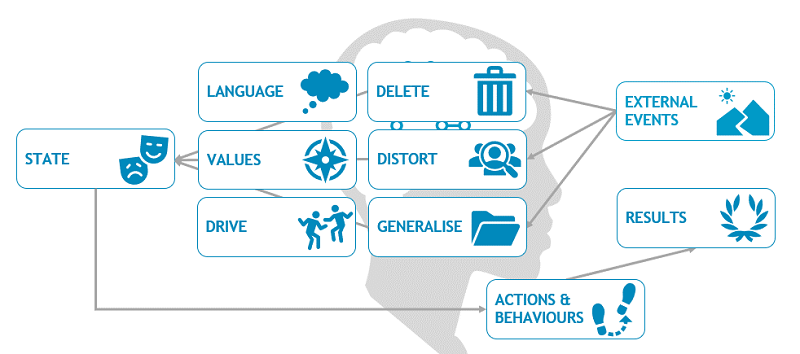How We Operate
Episode #2 of the course Confident conflict management by Martin Probst
Welcome back.
Yesterday, you learned about the underlying causes of conflicts, and that they are mainly caused by differences in values, wants, needs, expectations, and/or misunderstandings. Today, we will have a closer look at how we all operate to help us identify and confidently handle conflict going forward.
Your brain is exposed to around two million bytes of information each and every second. However, it lets go of information it finds irrelevant through deletion, distortion, and generalization filters, and only holds onto about seven chunks of information per second—this is what we call “our reality”, and why all too often:
“We don’t see things as they are; we see them as we are.” —Anaïs Nin
Each person’s reality differs from the next person. They are based on experiences, learned values, behaviors, and fears.
META Communication Model
The following NLP (Neuro-Linguistic Programming) communication model explains how we interpret information from the outside world (external) by using our five senses and internal filters to create our internal representation that affects our thoughts, feelings, and behaviors.
The more familiar you are with this highly beneficial model, the better you can understand other people’s points of view and thus communicate with greater flexibility. It helps you to relate to people easier, respond in their terms, and overcome difficult conversations. Understanding and utilizing this model will also allow you to stay in control of your own mind and cause things to happen in your life, as well as being able to build rapport with anyone to achieve win-win situations in difficult conversations, negotiation, conflict situations, and many other circumstances.
The process begins with an external event that we experience with our five senses, which are:
• visual (seeing)
• auditory (hearing)
• kinaesthetic (feelings, touch, emotions)
• olfactory (smell)
• gustatory (taste)
Our sensory input channels (five senses) are exposed to around two million bits of information each and every second. To make sense of the world, our brain deletes, distorts, and generalizes information, down to only about seven chunks of information:
• We delete all the time that we unconsciously decide is not relevant.
• We distort what we experience so it fits in with what we are familiar with.
• We generalize and draw conclusions based on a few experiences.
This becomes our reality: an average of seven chunks out of two million bits of information per second! It is crucial to understand that the true reality consists of much more information than we consciously perceive. Our internal representation cannot possibly contain the reality itself.
The reality that we experience is largely determined by what we do inside our heads. Therefore, Perception = Reality, and Reality = Perception.
This ongoing process of how we filter information, our values, the internal and external language we use, and our motivation or drive creates an Internal Representation, our emotional state (psychology and physiology), of what we externally experience.
Based on how we interpret events in our lives and how we respond to our external environment with our actions and behaviors will ultimately determine the results we achieve. That’s why the best real estate we can invest in, is the one we have between our ears!
My top tip for the day: When you next encounter challenging situations, first and foremost acknowledge that things are not always as they seem to you. Try to stay objective and see it from the other person’s point of view.
“The way we see the problem is the problem.” —Stephen R. Covey
Tomorrow, we will take a closer look at what it takes to successfully identify and confidently handle conflict.
“Dare to make a difference!”
Martin
Recommended reading
Recommended book
Neurological Rewiring by Martin Probst
Share with friends


